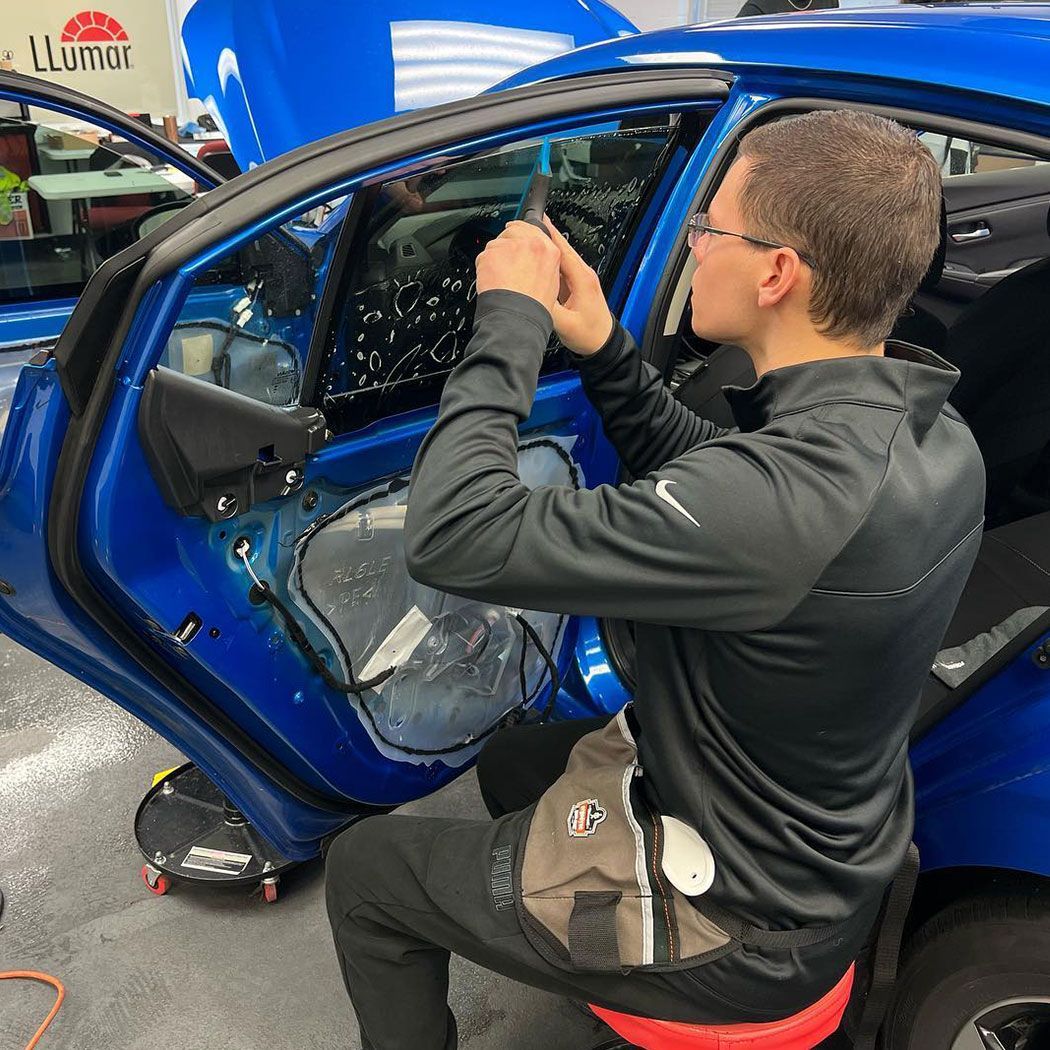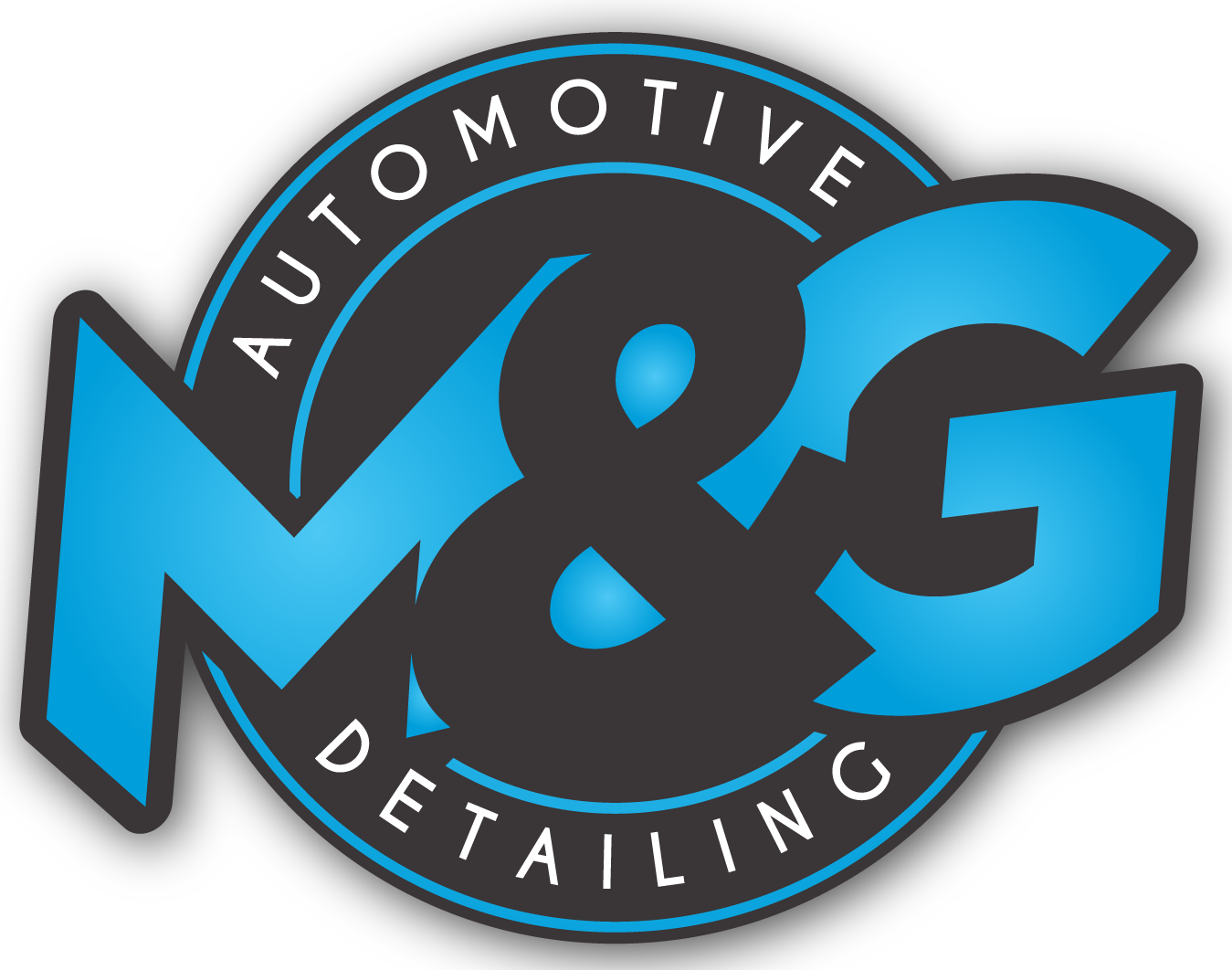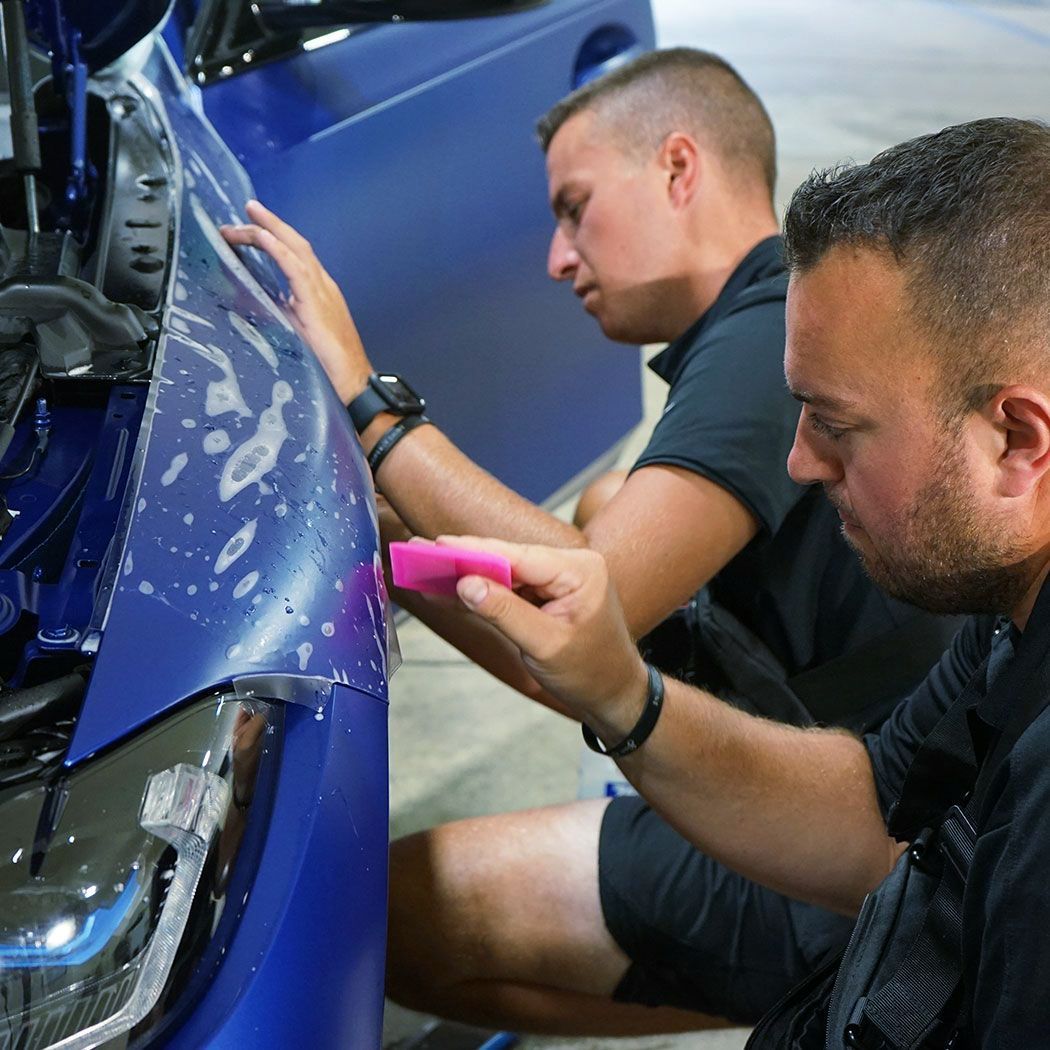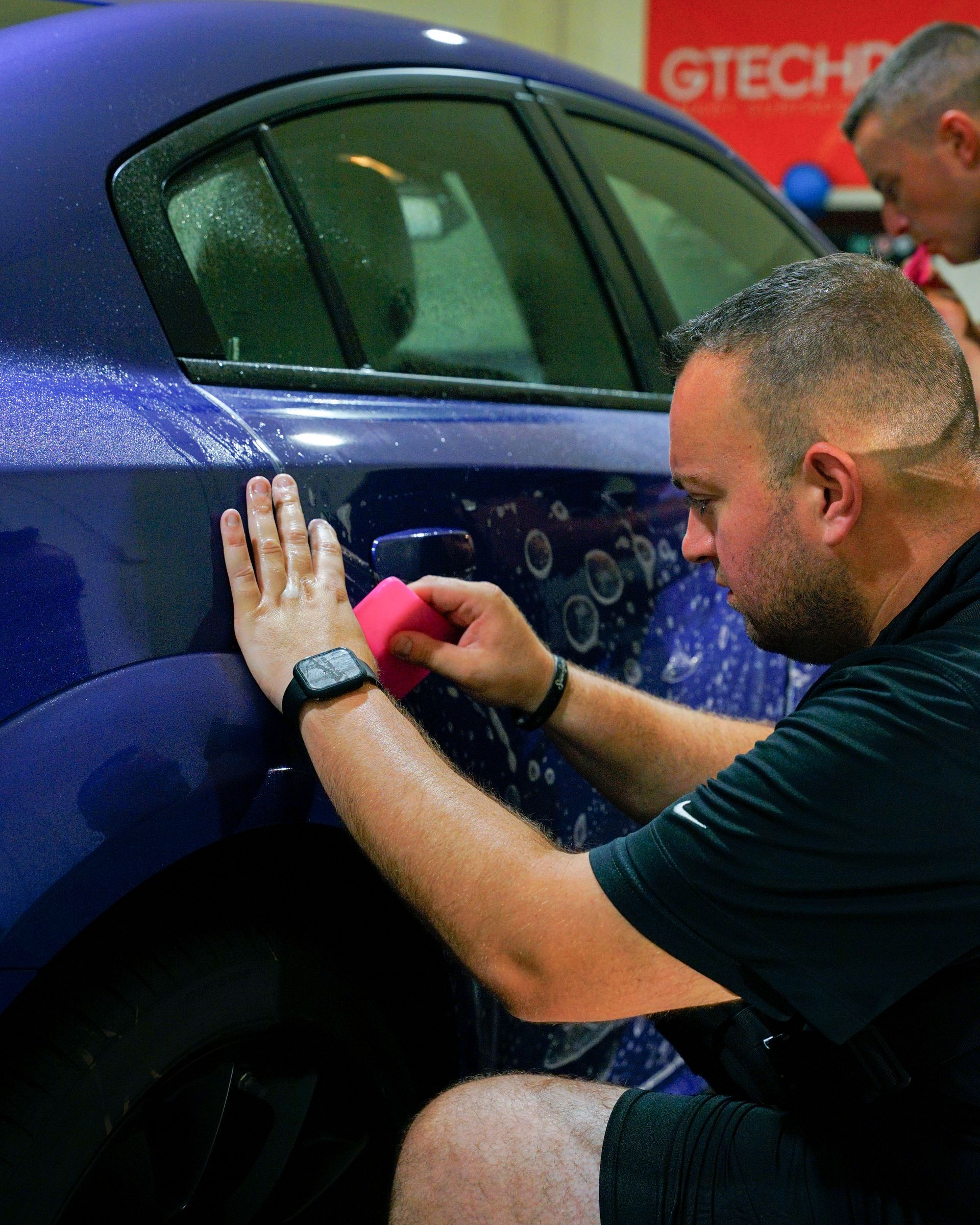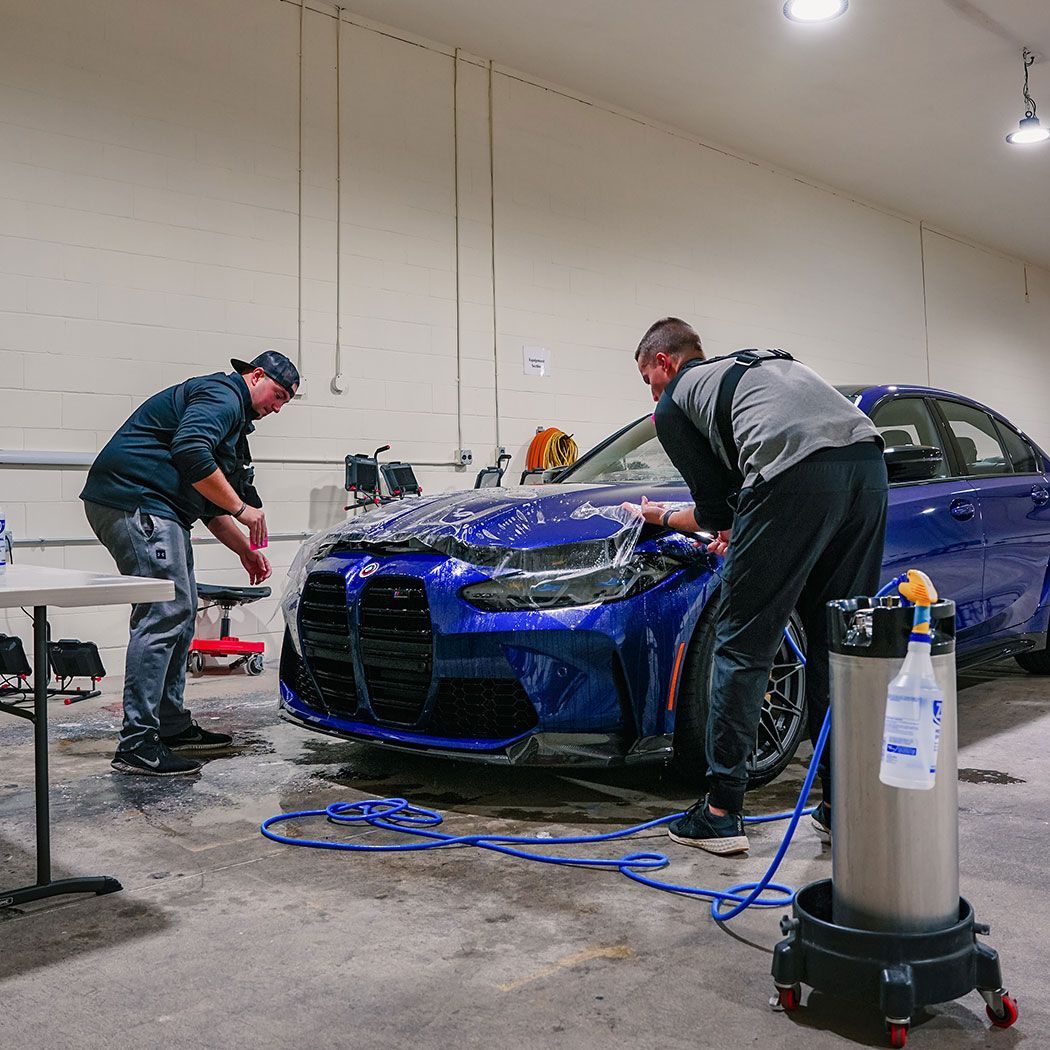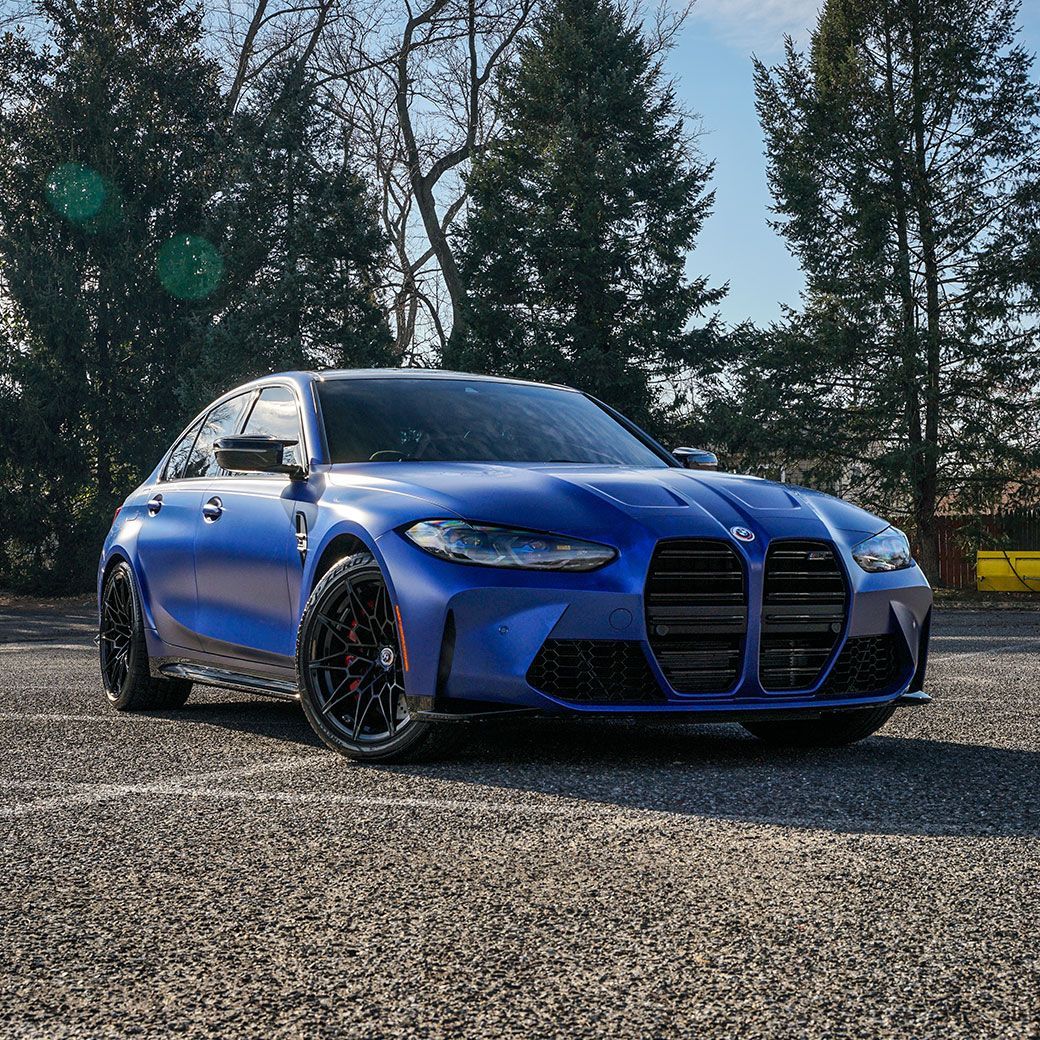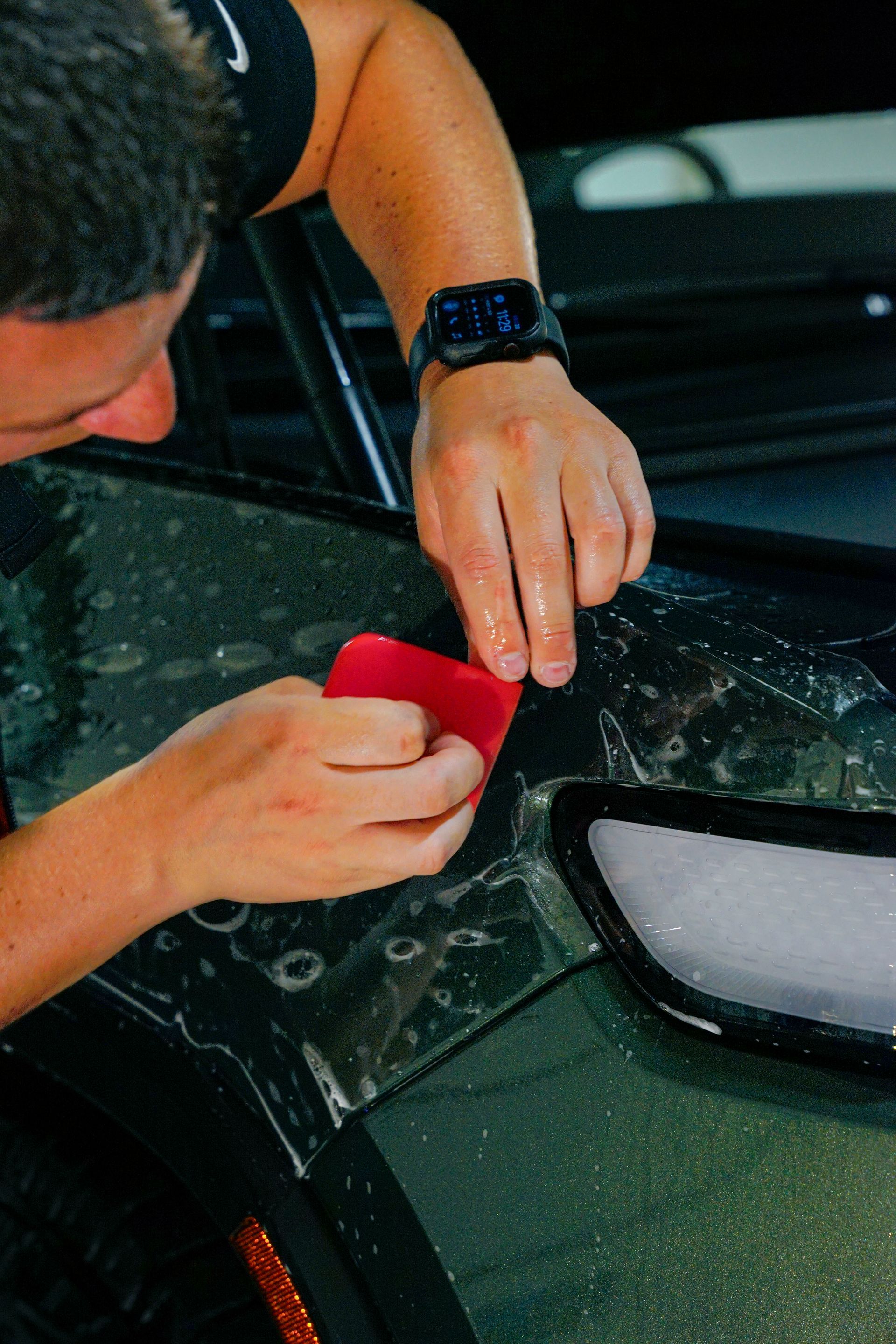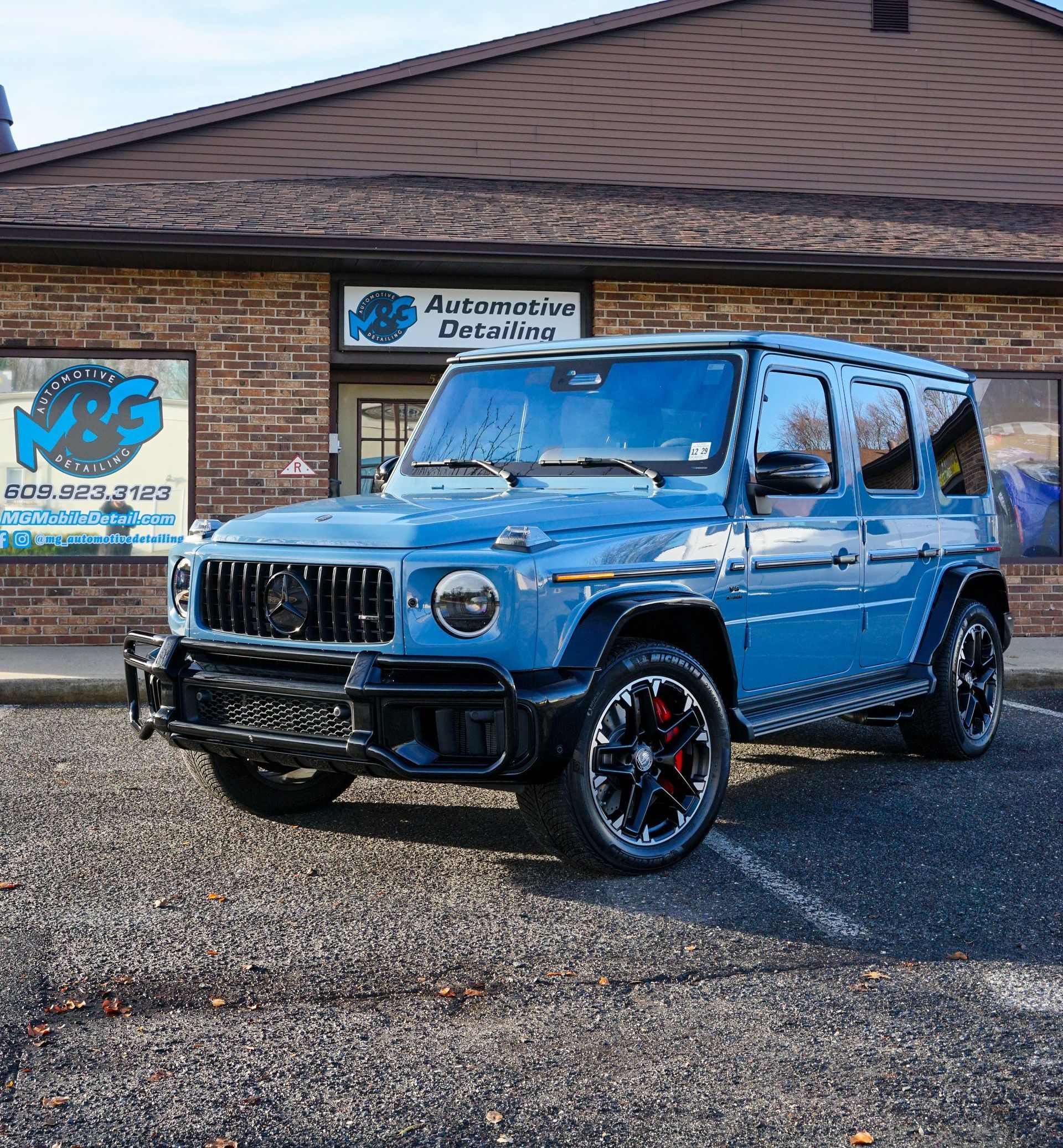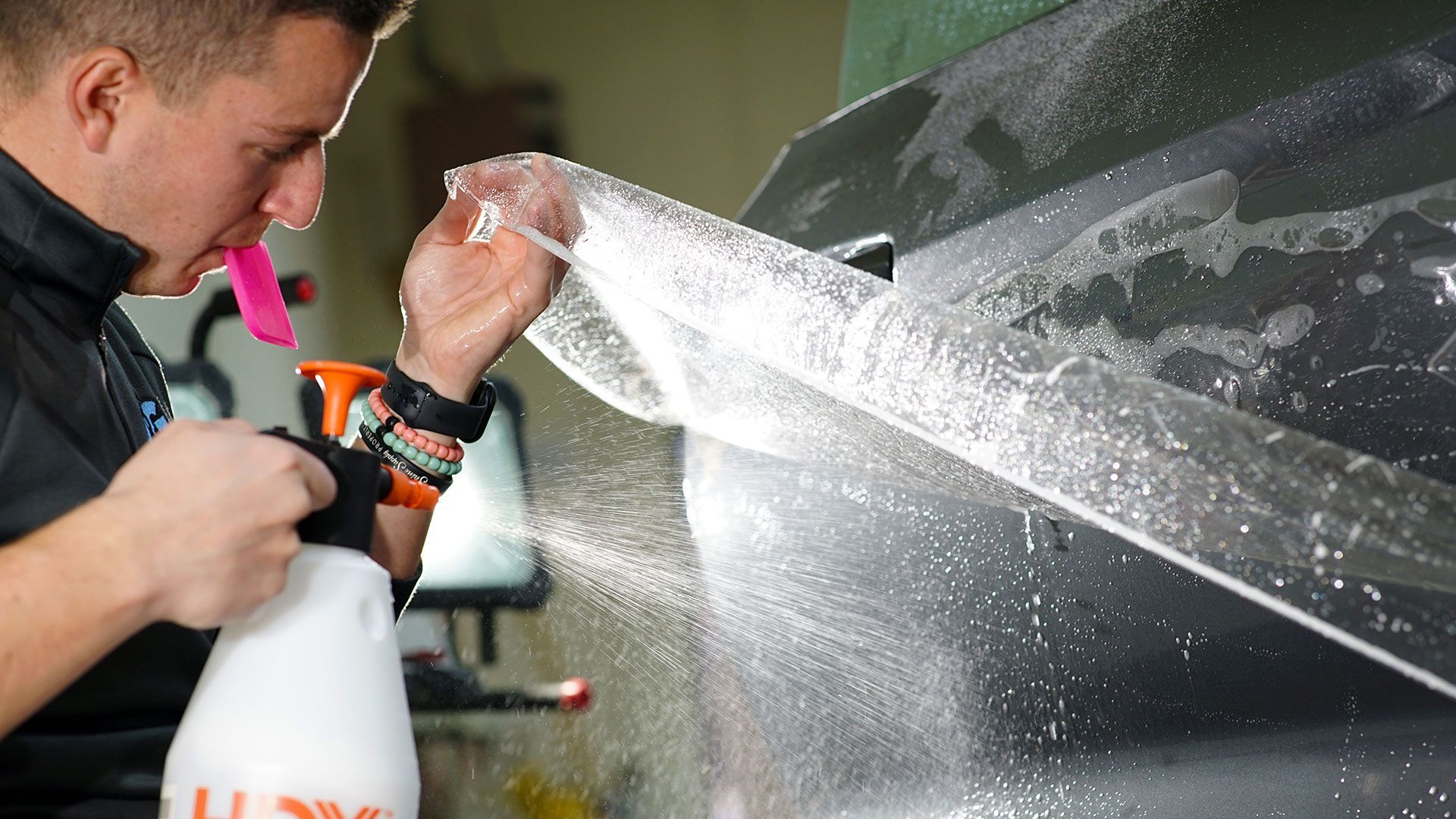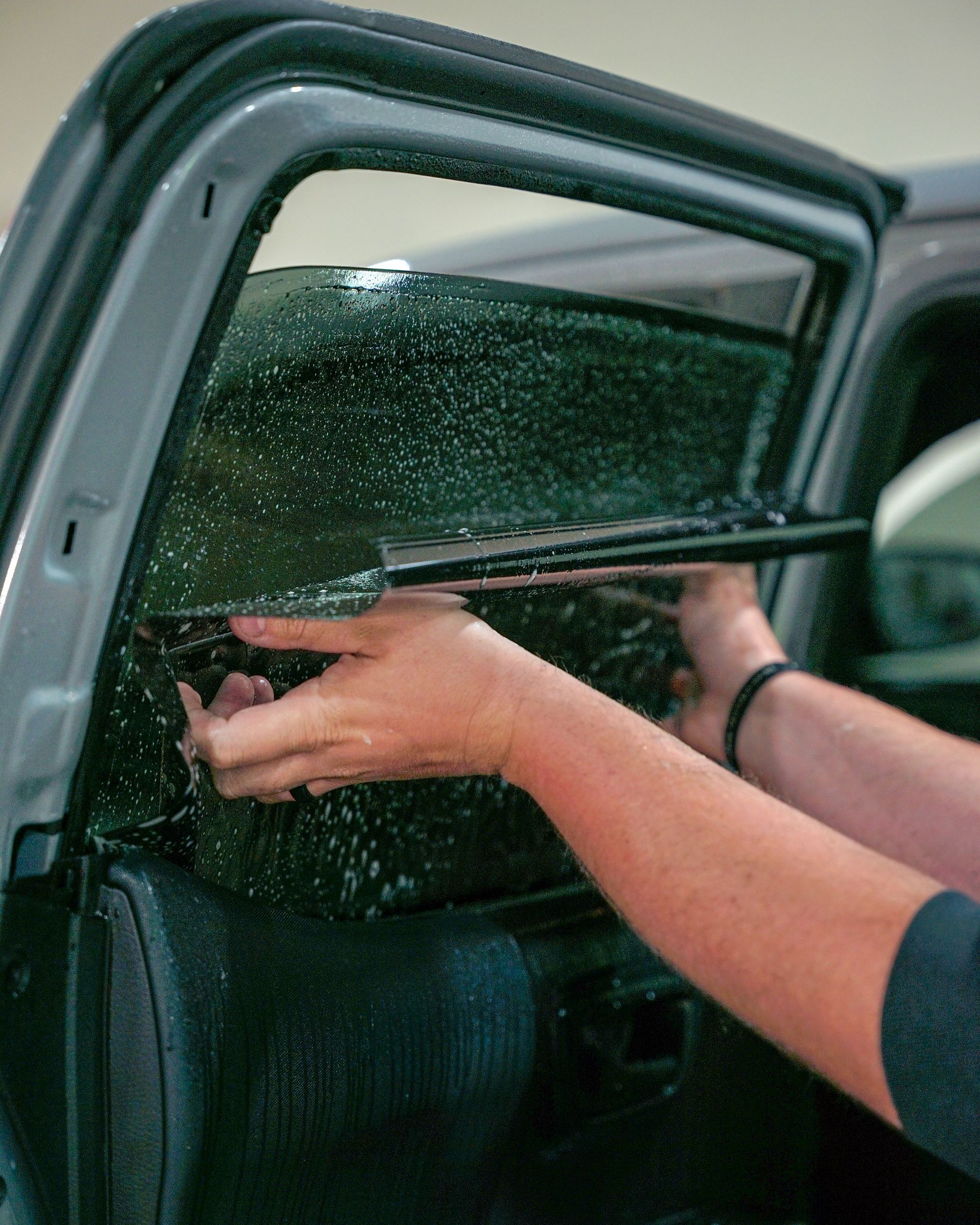Safeguarding Your Vehicle from Road Debris with PPF: The Ultimate Protection Guide
Paint protection film is your car’s best friend against road debris. This transparent, tough film acts like a super shield, soaking up stone and gravel impacts to keep your vehicle's paint unscathed. Imagine driving your car down a stony road and not having to worry about paint chips and scratches—that's the power of PPF. With it, your car can remain looking pristine and fresh longer, no matter where you drive next.
Safeguarding your vehicle from road debris with paint protection film involves applying a transparent protective film to the exterior surfaces, protecting them from chips, scratches, and damage caused by rocks or other hazards on the road. This transparent shield ensures that your car's exterior aesthetics are maintained and enhances its resale value. Professional installation of PPF ensures precise application and proper alignment, minimizing the risk of errors.
What is Paint Protection Film?
Paint protection film, often referred to as PPF or clear bra, acts as a superhero costume for your vehicle. It's a clear layer made from thermoplastic urethane that is applied to the exterior of your car. Just as the name suggests, it shields your car's paint from the many types of damage that occur during daily driving. Picture a shield around your car, absorbing the impact of stones, gravel, and other debris that would typically scratch or chip the paint. The incredible aspect is that this shield is see-through, so it doesn't alter your car's appearance. It retains the vibrancy of your paint over time and protects your vehicle against unsightly swirl marks and small chips.
Characteristics of PPF
- Thickness: The average thickness of PPF is about 8 mils, ensuring durability and strong protection.
- Strength: With a tensile strength of 3000 psi, paint protection film offers reliable resistance to impacts.
- Clarity: PPF provides up to 99% UV protection without compromising the appearance of the vehicle.
- Flexibility: Its elongation at break goes up to 200%, proving its ability to absorb shock and retain shape.
- Warranty: Most high-quality PPF comes with a warranty period ranging from 3 to 5 years or longer, assuring long-term protection.
PPF isn't just a thin layer of material; it's engineered to provide exceptional protection while being virtually invisible. Imagine having armor protect your car’s paint while maintaining its original shine and sparkle. This translates to peace of mind for you as a driver, knowing that every drive won't cause potential harm to your vehicle's exterior. Understanding these key aspects illuminates just how robust and critical paint protection film is in safeguarding vehicles from road debris damage.
The Strong Defense of PPF against Paint Chips and Scratches
Think about the last time you drove on a highway. What you probably didn't notice were the tiny rocks and other debris flying up from the road. While they may not look like much, they can cause some real damage to your vehicle's paint if left unchecked. Paint protection film acts as a shield, fending off swirl marks and even small chips caused by rocks or road debris. Imagine that as you are driving down the road, other cars' wheels are throwing tiny stones and pebbles in your direction. These seemingly harmless projectiles can become a nightmare for your car's paint job. However, PPF provides a transparent yet robust barrier to repel these hazards, ensuring that your vehicle remains unscathed.
Let's say there's a construction zone on the side of the road with gravel scattered around. As cars pass through this area, the gravel can get kicked up into the air and hit vehicles in their path. Without PPF, these small stones could easily cause visible chips or scratches on your car's exterior, leading to unwanted expenses on repairs. In addition to protecting against chips and scratches, a clear bra also contributes to maintaining the vibrancy of your car's paint, preserving its overall quality for years to come. The high-quality performance of PPF ensures that your vehicle's exterior aesthetics remain intact, giving you peace of mind as you navigate through different driving conditions. Whether it's everyday commuting or long road trips, knowing that your car is shielded from potential damage allows you to focus on the journey without fretting about the effects of road debris.
As an added bonus, investing in paint protection film not only preserves your vehicle's appearance but also increases its resale value. Cars equipped with PPF generally have a higher resale value compared to those without it. This means that, in addition to safeguarding your vehicle from harm, you're making a wise investment that pays off when it comes time to upgrade or sell your car.
Shielding Your Vehicle from Cracks and Rocks with PPF
Your car faces a relentless assault of road debris each time you take it for a spin, from small pebbles to larger stones propelled by other vehicles. These projectiles can lead to visible chips and scratches on your car's paint, resulting in a diminished appearance and decreased resale value. Paint protection film acts as an invisible force field encircling your vehicle, providing a sturdy defense against common road hazards. It forms a resilient yet transparent barrier that effectively repels these potential threats. The strength of PPF lies in its exceptional ability to fend off these adversities without compromising the aesthetic appeal of your vehicle. This means you can confidently cruise down the highway, assured that your car is shielded from harm.
Imagine navigating a gravel-strewn road with rocks peppering the air while rain threatens to unsettle the surface. Thanks to the paint protection film, your vehicle remains unscathed, its pristine appearance preserved amidst the chaos of flying debris. Beyond preventing unsightly damage, this protective film plays a pivotal role in safeguarding the aesthetics of your car. No longer will you need to worry about unsightly nicks and scratches that detract from your vehicle's visual appeal. It's not just about maintaining appearances; PPF also significantly contributes to enhancing the resale value of your vehicle. Cars equipped with a clear bra often command a higher price in the second-hand market compared to those without this protective layer. This illustrates how this film doesn't just offer short-term benefits; it's an investment that pays dividends in the long run. By protecting your vehicle from visible chips and preserving its attractive appearance, a paint protection film ensures that it retains its allure over time, making it an enticing prospect for potential buyers down the line.
Navigating the Installation and Maintenance of PPF
You might be deliberating on how to navigate through the intricate steps required for a successful paint protection film installation. Professional installation lies at the heart of this process. Thoroughly preparing the vehicle before installing the clear bra is crucial. This involves meticulous cleaning to rid the vehicle of any contaminants or particles that could interfere with the film's adhesion. Additionally, a professional inspection before installation ensures that any pre-existing damage or imperfections are addressed. Opting for professional installation is critical as it guarantees precise application, proper alignment, and minimal risk of errors. Although DIY installation kits are available, they require a high level of skill, attention to detail, and patience. Relying on a professional installer ensures the film is seamlessly applied while preserving your vehicle's paint integrity. Precision is paramount in achieving optimal protection against road debris.
Ongoing Maintenance
A paint protection film isn't a one-time application that you can simply forget about. It necessitates regular cleaning and maintenance to uphold its continued effectiveness in safeguarding your vehicle's paint. The use of appropriate cleaning agents and techniques is vital to prevent film damage. Avoiding harsh chemicals or abrasive materials during cleaning is crucial for upholding the integrity of the PPF over time. Generally, gentle washing with mild soapy water and a soft cloth is recommended. Diligently adhering to detailed care instructions ensures that the film continues to provide superior protection for your vehicle. Comparable to tending to a meticulously maintained garden, ongoing maintenance of your paint protection film ensures it remains radiant and robust in protecting your vehicle's exterior.
Ensuring Correct PPF Film Application
Applying paint protection film is not just about slapping it onto your vehicle. It's a meticulous process that demands precision and attention to detail. While DIY kits might seem convenient, they require a high level of skill and patience—qualities professional installers are trained in. Let's dissect the process into essential components:
Proper Inspection and Preparation: Before the film can be applied, your vehicle needs thorough preparation. This includes a deep cleaning to remove any dirt, wax, or debris that might interfere with the film's ability to bond with the paint. Any pre-existing damage or imperfections should also be addressed. Professional installers are adept at conducting inspections to ensure that your vehicle is in optimal condition for PPF application.
Skilled Application Techniques: Experienced professionals' skillful application of paint protection film is what makes it an art. Ensuring that the film fits precisely and aligns properly with your vehicle's contours demands expertise. This precise application not only enhances the aesthetic appeal of your vehicle but also guarantees comprehensive coverage that shields it from potential damage.
Alignment and Air Release: An essential aspect of paint protection film application is ensuring its freedom from air bubbles or creases that could compromise its effectiveness. Achieving a seamless finish involves carefully aligning the edges and working out any trapped air or fluid during the application process.
Quality Assurance: Professional installers adhere to dealer-approved manufacturing standards, guaranteeing that the paint protection film used is of superior quality and meets industry-specific benchmarks. Additionally, the warranty offered by reputable manufacturers ensures long-term protection for your vehicle, giving you peace of mind regarding the durability and performance of the applied film.
Importance of Expertise: Choosing professional installers with specialized expertise in PPF not only ensures efficient application but also provides access to valuable insights into protective measures beyond the film itself. Their knowledge extends to supplementary protective coatings like ceramic coating and recommendations for ongoing maintenance, proving to be an asset in safeguarding your vehicle against road debris and environmental wear.
Every step in this application process contributes to the enhanced longevity and resilience of your vehicle's exterior, underscoring the importance of skilled professionals in guaranteeing an effective and reliable PPF installation.
Premium-Quality Paint Protection Film Service in Cherry Hill, NJ
Unveil unrivaled protection for your vehicle's paint with M&G Automotive Detailing's
premium-quality paint protection film services, now available in Cherry Hill, NJ. Shield your car from road debris, scratches, and other hazards without compromising its aesthetics. Our meticulously applied paint protection film offers a seamless and durable barrier, ensuring your vehicle maintains its pristine appearance for years to come. With our team's expertise and dedication to excellence, you can trust M&G Automotive Detailing to deliver exceptional results. Secure your car's beauty and value by scheduling your paint protection film service today. Call us at
(609) 923-3123!
